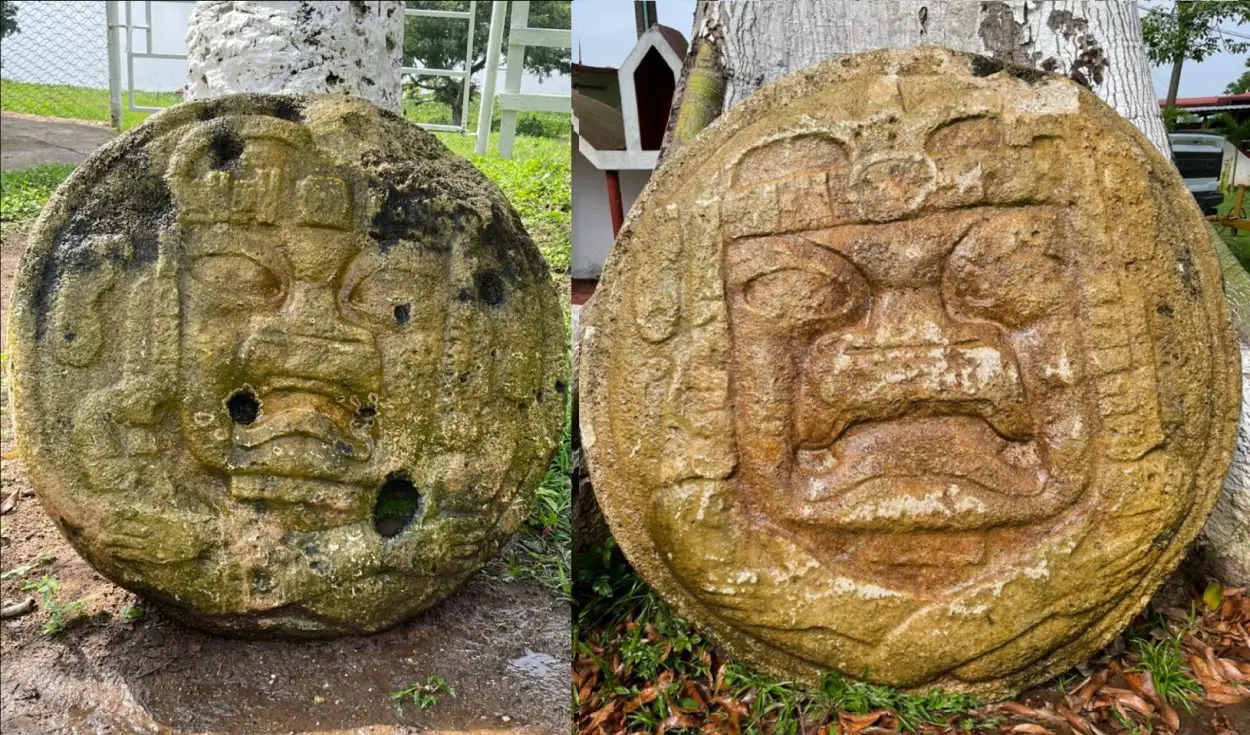Archaeologists from the National Institute of Anthropology and History (INAH) have unearthed two ancient reliefs depicting Olmec rulers.
The Olmec are the earliest known Mesoamerican civilisation (also referred to as the “mother culture” of Mesoamerica). The name ‘Olmec’ comes from the Nahuatl word: Ōlmēcatl or Ōlmēcah, meaning ‘rubber people’.
The discovery was made in Tenosique, a municipality in the state of Tabasco, Mexico, and dates from the late Olmec horizon (900-400 BC) during the Formative period.
The reliefs are made of limestone and have an approximate diameter of 1.4 metres. Both have a similar iconography, showing a large square-shaped face with a diadem, and glyphs associated with the figure of the jaguar. Beneath the face are a pair of crossed arms, while footprints can be seen on the sides.
Archaeologists have determined that the reliefs originate from the Middle Usumacinta region, located between the mouth of the Chacamax River to the Usumacinta and the mouth of the San Pedro River.
Based on similar reliefs found in Balancán and Villahermosa, the researchers believe that they depict local rulers performing ritual contortionism. This is done by adopting a stance that reduces the flow of blood and oxygen to the brain to achieve a trance-like state.
The team suggests that the Maya adopted this type of Olmec stylism for altars in sites such as Caracol in Belsize, especially the circular reliefs of contortionists after the coastal plains of Tabasco underwent a process of ‘Mayanisation’ around 500-300 BC.
The reliefs are to be transferred to the Pomoná Site Museum which houses a similar Olmec relief from Ejido Emiliano Zapata.
Header Image Credit : NAH Tabasco Centre







